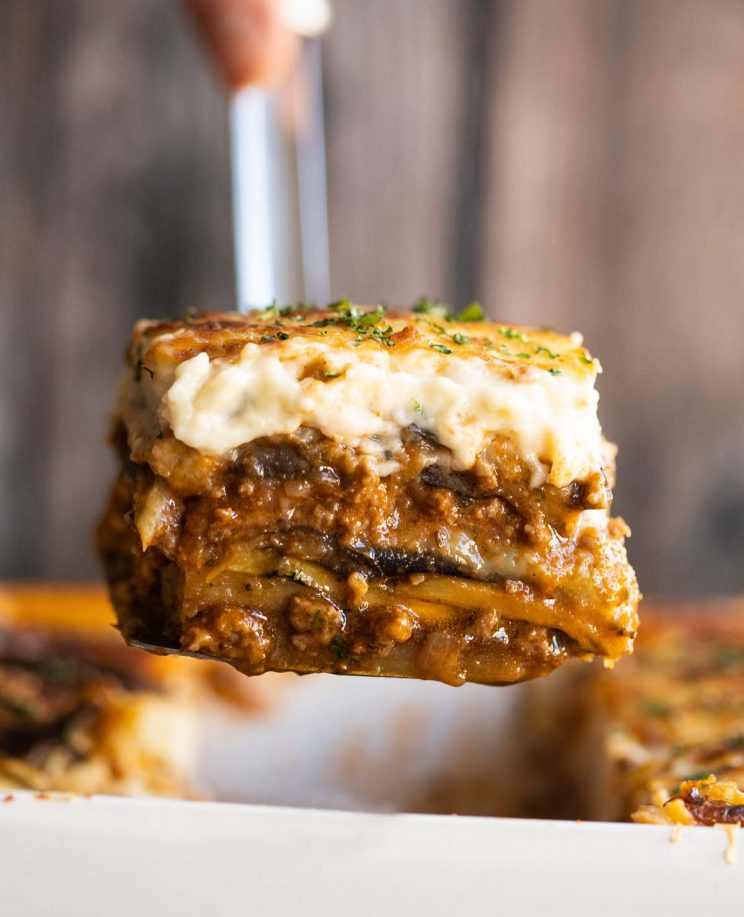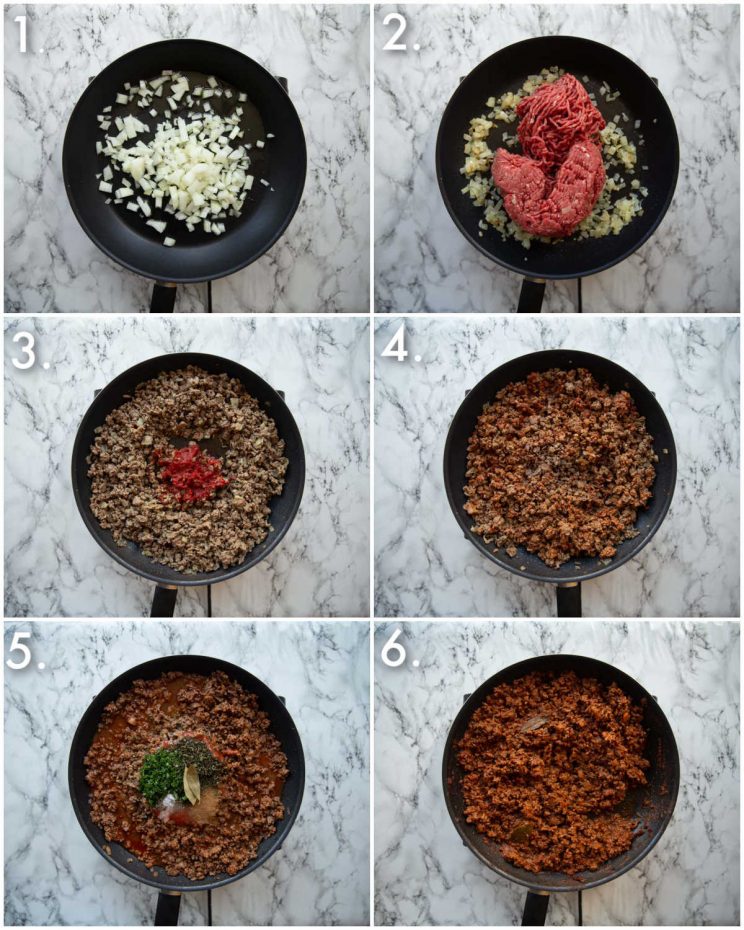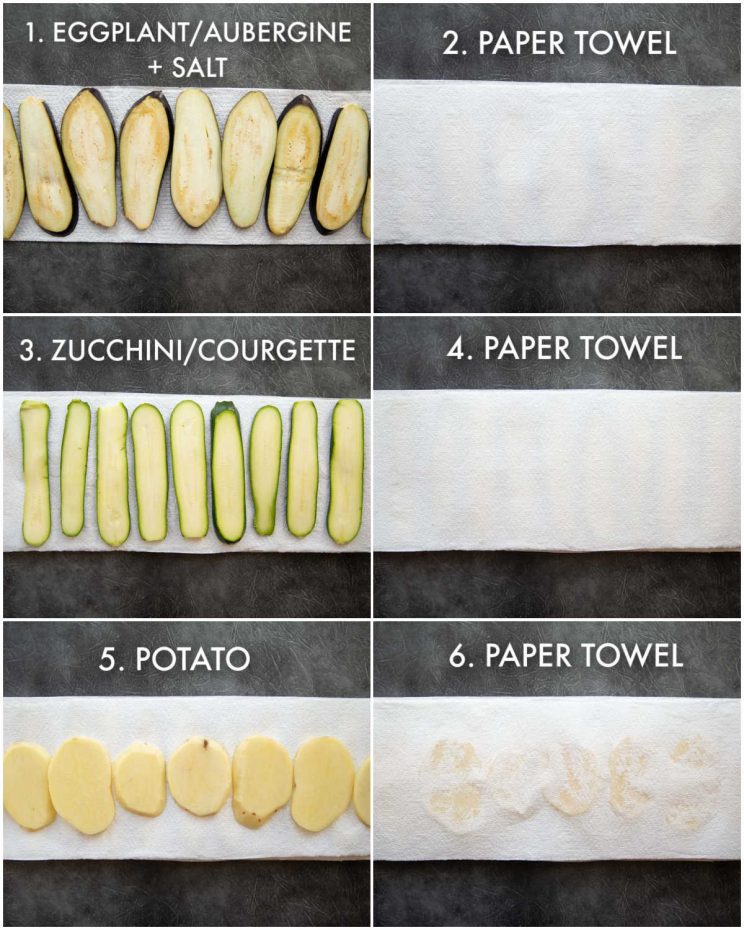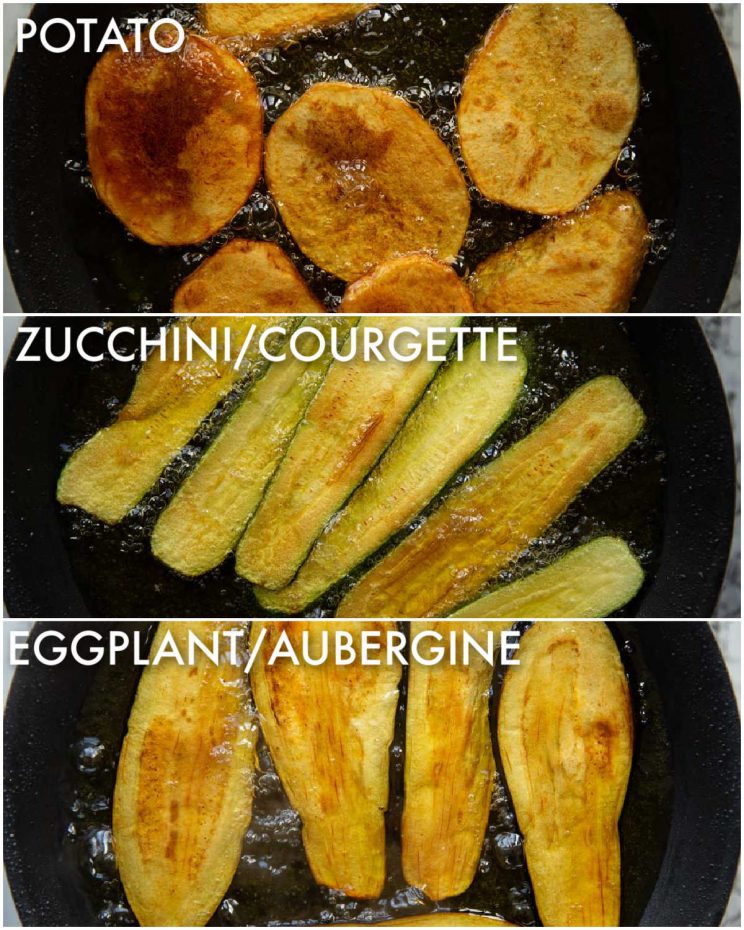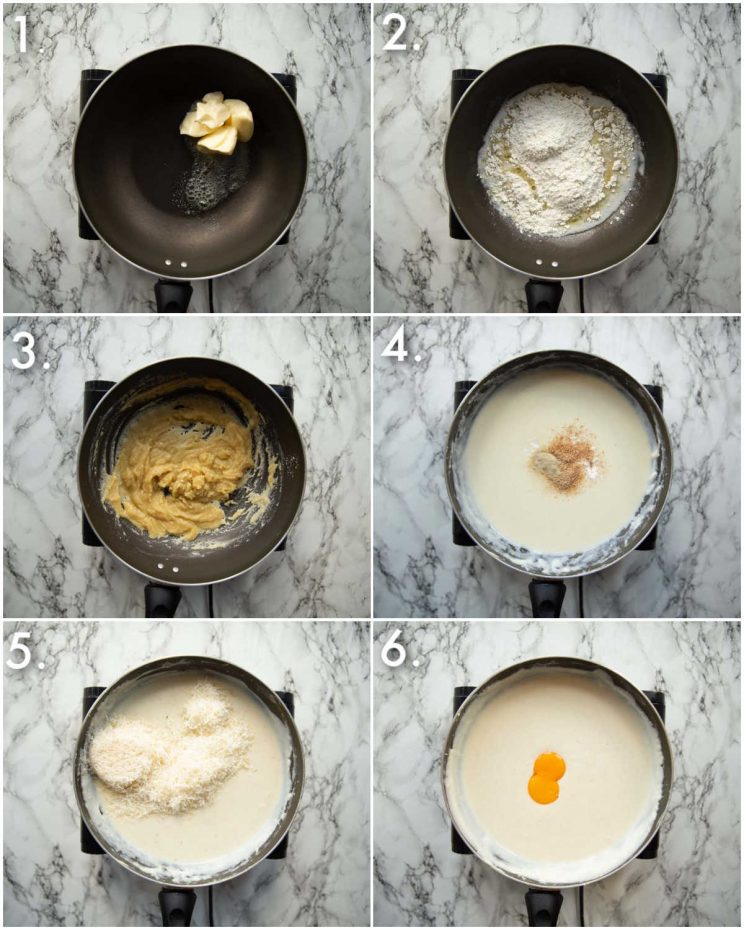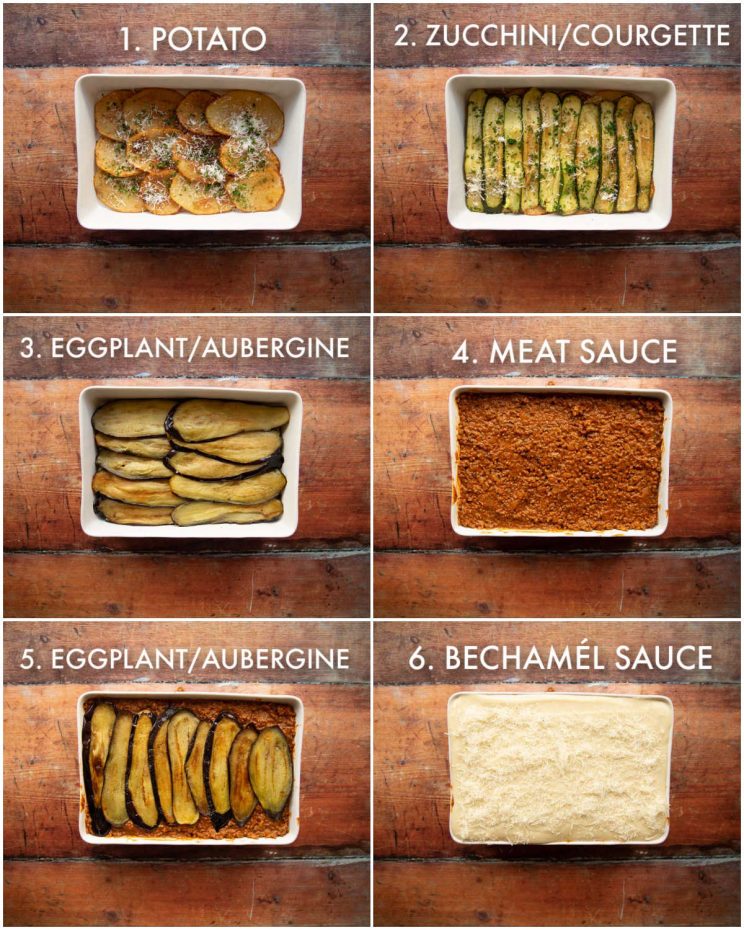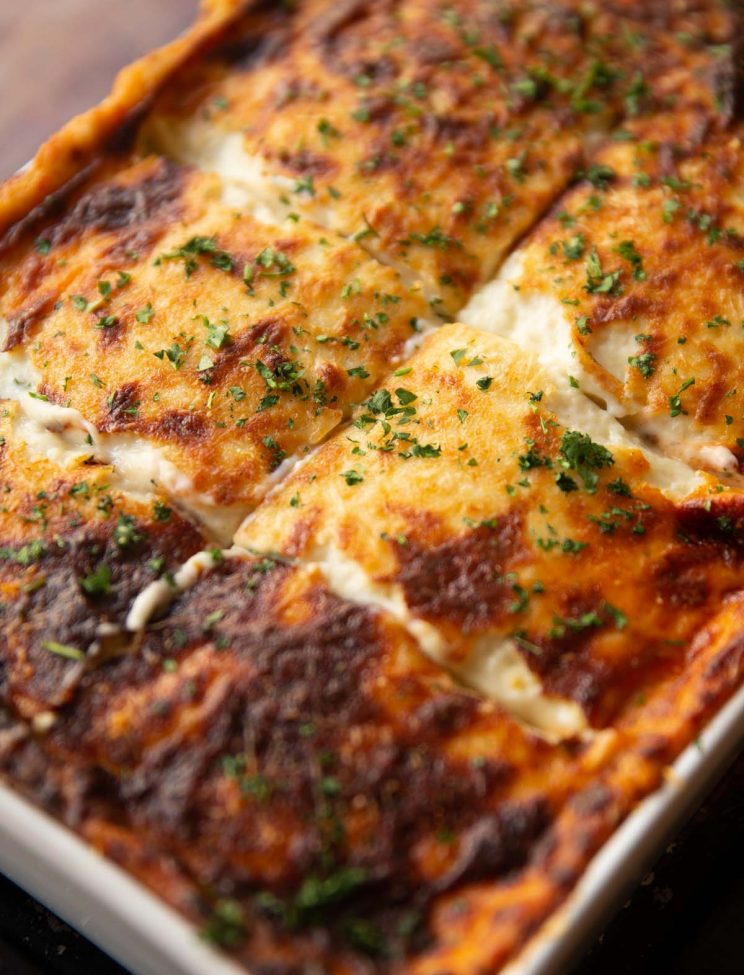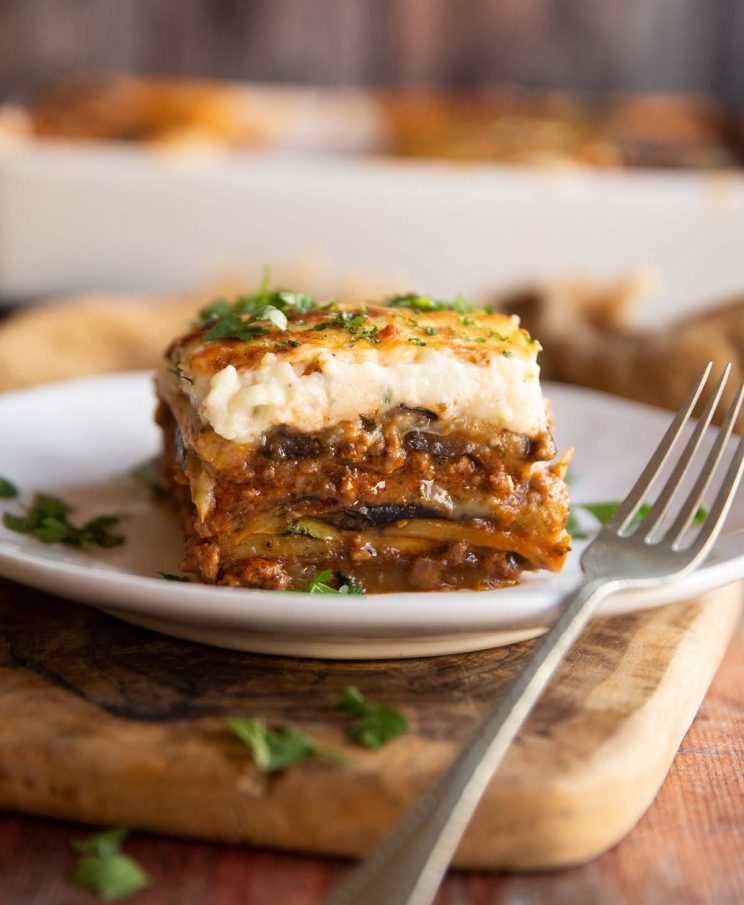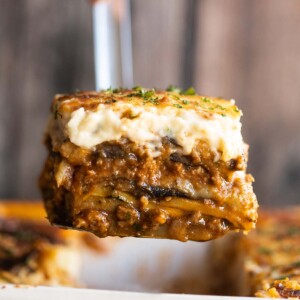Moussaka is a labour of love, there’s no two ways about it. There’s a fair few steps, but once you get in the swing of things it truly couldn’t be easier to make. There’s also a fair few different ways to make Moussaka, but today I’ll show you what I deem to be the most delicious way! Follow me…
Meat Sauce for Moussaka
Beef vs Lamb
There’s a lot of dispute over what’s the traditional meat to use in Moussaka. Most commonly you’d see lamb or beef being used, but I’ve even read pork or veal has traditional roots! I’ve personally tried this recipe using beef and lamb, and have settled with beef. In my opinion it takes on the flavour profile of a Moussaka better, but you can use lamb if you wanted.
Thick Consistency
The meat sauce for a Moussaka is somewhat similar to a classic ragu/bolognese. One of the main differences is the consistency. Moussaka is known for having distinctive layers, and ensuring your meat sauce has reduced down properly will help create those layers.
Cinnamon
Another distinctive part of a Moussaka’s meat sauce is the use of cinnamon. It’s quite subtle, but it really gives that classic Moussaka flavour. You can use a cinnamon stick, or use ground cinnamon as I’ve done here! Process shots: fry onion and garlic (photo 1), fry ground beef (photo 2), add tomato paste (photo 3), fry then add red wine (photo 4), pour in stock and passata then add thyme, parsley, bay leaves, cinnamon and seasoning (photo 5), simmer until thick consistency (photo 6).
Vegetables in Moussaka
Eggplant/Aubergine
Eggplant in Moussaka is essential. To prepare it you’ll need to slice then sprinkle with salt and leave to rest. This will not only draw out unwanted moisture, but will also remove the bitter taste from the eggplant.
Potato
You could probably get away with just layering with eggplant and still call it a Moussaka, but potato is very widely used. And of course, me being me and this blog being this blog, I highly recommend adding potato. After you’ve sliced the spuds I recommend patting dry to remove unwanted moisture.
Zucchini/Courgette
Not as widely used, but still an authentic addition. Same as above, just pat the slices dry to remove moisture. You could pat the veg dry with tea towels, but I like to stack them between sheets of paper towel. That way you can soak them all at once and just leave them until needed.
Baking vs Frying
Traditionally you’d fry the veg, but as times have moved on so has the cooking method. As such nowadays it’s just as common to bake the veg. Me? You know I’m not shy of oil around here 😂 I fry the veg mainly because I’ve always got some leftover pot of oil that needs recycling. That and you do get more of a deeper golden ‘crust’, which offers slightly more flavour. The obvious downside is the absorption of oil, namely in the eggplant (which is like a sponge!). As such just make sure you thoroughly pat it all dry with paper towels before you stack the Moussaka.
Béchamel Sauce for Moussaka
Meat Sauce layer ✅ Veg layer ✅ The third and final main layer is the béchamel sauce. Again, this is similar to a classic béchamel you’d use in an Italian lasagne, just with a few differences:
Consistency – Just like the meat sauce, this béchamel is MUCH thicker than the classic. Again, just to ensure it creates a defiant layer that doesn’t seep into the meat sauce. Egg Yolk – These help thicken the sauce, but also add a gentle rich flavour. Seasoning – nutmeg and white pepper are a must! The béchamel sauce makes up quite a thick layer so it’s important it’s properly seasoned.
What Cheese to use?
Traditionally you’d use Kefalotyri, but realistically most hard cheeses work well. Here I use Pecorino, but Parmesan works nicely. Process shots: melt butter (photo 1), stir in flour (photo 2), whisk in milk (photo 3), add seasoning (photo 4), add cheese (photo 5), stir in egg yolks (photo 6).
Moussaka Layers
You can stack a Moussaka in various different ways, but you really want to ensure the potatoes are at the bottom, just to create a sturdy base. Then you finish with a nice thick layer of the béchamel. This also ends up going beautifully golden and crispy as it bakes 😛. Here’s how I stack mine:
How to layer a Moussaka
Can you assemble moussaka ahead of time?
Yep! You can then rest in the fridge until ready to bake. Just make sure you bring it to room temp before you bake to take the chill out of the centre.
Does moussaka freeze well?
It sure does. You can do this baked or unbaked. Just thaw in the fridge then bake as needed.
What to serve with Moussaka?
You can serve by itself, just garnished with a good pinch of fresh parsley. It’s also nice with a small side salad or even a chunky of crusty bread! Check out my Sides for more inspo.
For more comfort food classics check out these beauties:
Hearty Ground Beef Dinners
Classic Lasagne Traditional Cottage Pie (or Shepherd’s Pie!) Chilli Con Carne Spaghetti Bolognese
How to make Moussaka (Full Recipe & Video)
If you loved this Moussaka Recipe then be sure to Pin it for later! Already made it or got a question? Give me a shout in the comments and pick up your free ecookbook along the way!
